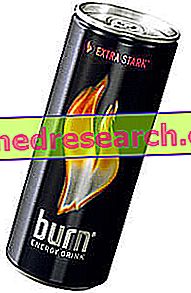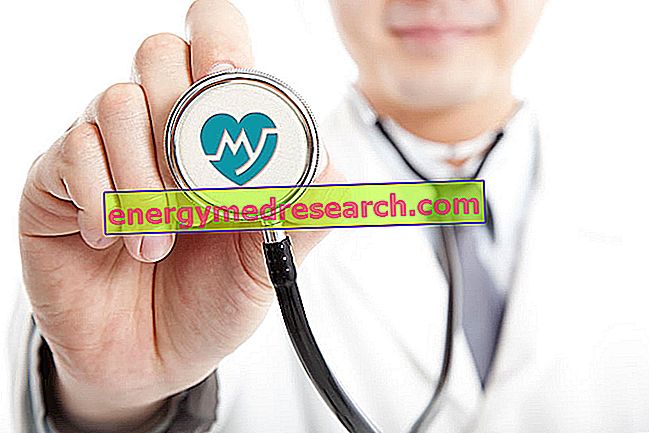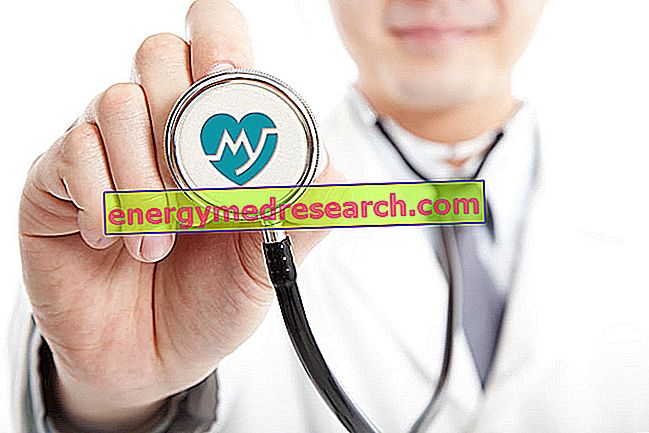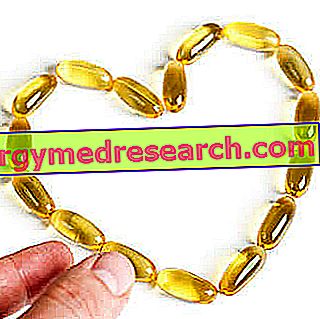Ingredients Burn Energy Drink : Water, sugar, citric acid acidifier, carbon dioxide. Taurine (0.4%), Glucoronolactone (0.24%), caffeine. Acidity correctors: trisodium citrate. Flavors, dyes: E150d and E129 Preservative: potassium sorbate. Inositol (0.012%). Niacin. Antioxidant: ascorbic acid. Pantothenic acid, guarana extract, Vitamin B6 and Vitamin B12.

By Dr. Davide Racaniello
Taurine Burn Energy Drink: particularly concentrated in some tissues, such as the heart and skeletal muscle, it is part of numerous biological functions, which make the limited quantity of approximately 400 mg synthesized by our body, which must therefore be integrated through common foods such as meat, fish, eggs and milk. Generally lacking in vegans, taurine is part of numerous biological functions:
- Synthesis of bile salts;
- Antioxidant action;
- Maintenance of cellular hydrosaline homeostasis;
- Cellular and tissue protection (mainly at cardiac level);
- Detoxifying action;
- Modulation of the immune response
In sports, taurine has proven to be particularly effective in reducing markers of oxidative damage, protecting muscle structures from insult induced by intense physical activity. These effects have been described for dosages ranging from 1.5 to 3 grams per day.
Nutritional Values Burn Energy Drink
per can 250 ml
Quantity | 100 ml | 250 ml |
Calories | Kcal 61 | Kcal 152 |
Grassi | 0 gr | 0 gr |
Carbohydrates | 14.4 gr | 36 gr |
Protein | 0gr | 0gr |
fibers | 0gr | 0gr |
Taurine | 400mg | 1000 mg |
glucoronolattone | 240mg | 600 mg |
Caffeine | 32mg | 80mg |
Inositol | 12mg | 30 mg |
Niacin | 6mg | 15 mg |
Pantothenic acid | 1.7mg | 4.25 mg |
Vitamin B6 | 0.7mg | 1.75mg |
Vitamin B12 | 0.3mcg | 0.75 mcg |
Glucoronolattone Burn Energy Drink: sugar produced in the liver during glucose metabolism. It can be introduced through the diet (very present in cluster fruits, apples, oranges and cruciferous fruits), then oxidized in the liver to glucaric acid and other metabolites, mainly responsible for its biological function:
- Detoxifying: guarantees the processes of hepatic detoxification through glucuronation;
- Possible cytoprotective and antitumor action (still in experimental phase).
The only studies in the literature concerning supplementation with this product are those in which the effectiveness of various energy drinks is evaluated. This does not allow us to draw firm conclusions regarding the ergogenic or cognitive efficacy of this compound.
Caffeine Burn Energy Drink: caffeine is a substance belonging to the genus of methylxanthines, commonly introduced in the daily diet through coffee (a cup contains around 100 mg). Once ingested, it is rapidly absorbed with a plasma peak around 120 'and with a very rapid half-life, ranging from 2 to 4 hours. Rapidly distributed to various tissues and metabolised in the liver in various dimethylxanthines, caffeine is able to:
- Stimulating lipolysis, increasing the blood concentration of fatty acids;
- Mediate vasodilation at the muscular level;
- Release the bronchial muscles and facilitate breathing;
- Improve cognitive skills and state of alertness;
- Increase diuresis;
- Reduce the sensation of pain by limiting the activation of nociceptors;
To these effects, mainly mediated by the metabolites of caffeine, is added the most important, given by the stimulus on the release of adrenaline and consequent increase in heart rate, vasodilation in the muscle and vital organs, increase in second messengers such as AMCP and activation of cascades of intracellular signals necessary for correct cellular functioning.
In sports practice the use of caffeine has proved effective in:
- Improve performance in terms of strength and strength. This ability is certainly due to the saving of muscle glycogen in favor of lipid oxidation, to the muscular vasodilatory effect and probably to a better influx of calcium in skeletal muscle, with consequent easier contraction;
- Reduce the feeling of fatigue: thanks to the improvement of the oxidative metabolism on the one hand and the analgesic effect on the other.
Caffeine is therefore mainly used for its ergogenic effect, which has proved useful for both endurance and purely strength sports.
The maximum safe dose used in the studies is 300 mg, beyond which there are tremors, anxiety, tachycardia, insomnia and excitement. On the other hand, prolonged use is an important risk factor for diseases of the gastro-intestinal, cardiovascular and nervous tract (migraine).
Inositol Burn Energy Drink: defined as a vitamin by some scholars, inositol is partly synthesized in the liver, starting from glucose, and partly taken from the diet through cereals, especially wholegrain ones, brewer's yeast, some fruits and meat. In most cases it is found in the form of phosphatidyl inositol, a very important membrane phospholipid in the regulation of the intracellular signal. In fact, by the enzyme phospholipase C, it can be split into two very important second messengers, including phosphatidyl insositol triphosphate, and downstream the activation of numerous enzymes and transcription factors involved in the regulation of cellular functionality. Beyond this biological role, inositol is generally used for its hepatoprotective and anti-cholesterolemic function. Recent evidence is also evaluating the action of inositol on the central nervous system, with potential therapeutic applications in depressive disorders and neurological disorders.
Niacin Burn Energy Drink: vitamin also known as vitamin PP or vitamin B3; it is present in plants (mainly whole grains), in the form of nicotinic acid, and in animals (meats), in the form of nicotinamide. In part it is also synthesized in the liver starting from the amino acid tryptophan.
This vitamin is part of the constitution of NAD and NADP, two very important electron acceptors, involved in many metabolic reactions.
- Oxidation-reduction reactions, central to metabolism as they are involved both in catabolic reactions (necessary to obtain energy) and in anabolic ones (necessary for the constitution of new elements;
- Non-redox reactions: important in regulating growth, differentiation and cellular function.
Niacin also appears to be involved in protecting pancreatic beta cells in type I diabetes, improving the lipid profile and protecting against cardiovascular diseases.
Deficiencies of these vitamins, very rare, give rise to a pathological condition known as pellagra, characterized by dermatitis, mental and cognitive disorders.
For a man in adulthood, LARNs recommend an intake of about 20mg / day, considering that doses higher than 3000mg may give rise to a classic gastrointestinal symptomatology also accompanied by hepatotoxicity.
Pantothenic acid Burn Energy Drink: also classified among the B vitamins, it is commonly called vitamin B5, and used in various supplements in the form of a stable salt (calcium pantontenate). Together with the amino acid cysteine and ATP, it is part of the synthesis of Coenzyme A, a key metabolism molecule involved in:
- Catabolic reactions, necessary to obtain energy from foods;
- Synthetic reactions of fatty acids, cholesterol and steroid hormones;
- Synthesis reactions of neurotransmitters;
- Metabolic reactions of drugs and toxins
The recommended daily dose ranges from 4 to 7 mg; however, given the presence of this vitamin in many foods (mainly whole grains and meats), deficiencies are found only in severe cases of malnutrition. There are no known cases of toxicity, although at very high doses (10/20 grams per day), profuse diarrhea have been recorded.
Vitamin B6 Burn Energy Drink: also known as pyridoxine, it is a pyridine derivative introduced mainly through meat, absorbed at fasting level after dependent ATP hydrolysis and transported to the liver bound to albumin. Here, the pyridoxine is transformed into pyridosamine and then into pyridoxal and subsequently phosphorylated, with consequent activation and storage. From the liver it is then conveyed to the various tissues where it can fulfill its biological role; as a cofactor:
- Increases blood glucose levels: it favors glycogenolysis and gluconeogenesis;
- Promotes the synthesis of neurotransmitters such as serotonin, dopamine, norepinephrine, GABA.
- Leads the synthesis of the EME group, necessary for hemoglobin to bind oxygen;
- It allows the synthesis of Niacin, starting from tryptophan;
- Modulates hormonal action;
It is used in the treatment of numerous pathologies, with particular importance for those neurodegenerative, cardiovascular and in immune disorders.
Its daily requirement is around 1 / 1.5 mg, but even in this case deficiency situations are very rare.
Vitamin B12 Burn Energy Drink : also known as cobalamin, it is present in many forms, even if those biologically active in the human body are only methylcobalamin and 5 deoxy deanosyl cobalamin. Among all, it is the only vitamin that contains a metal ion (COBALT) in its structure.
Represents the enzymatic cofactor for two enzymes:
- methionin synthase: mediator of the homocysteine detoxification reaction, therefore important in the prevention of cardiovascular risks;
- methylmalonyl-CoA mutase: important in energy metabolism from fats and proteins and also involved in the synthesis of EMOGLOBIN.
Vitamin B12 deficiencies are quite evident in the elderly population over 60 years, with consequent increase in homocysteine levels, onset of anemic pictures (pernicious anemia) and gastrointestinal and neurological disorders.
The daily requirement for the Italian population is estimated at around 20 mcg, which however should increase in the population over 60.
The diffusion of the deficiency states is determined by very complex absorption mechanisms, which include the presence of intrinsic factor (produced at the gastric level), specific intestinal receptors and plasma transporters.
BENEFIT EFFECTS Burn Energy Drink
Contraindications Burn Energy Drink
It is advisable to limit the consumption of Burn Energy Drinks under the age of 16, during pregnancy, lactation, in the presence of diabetes mellitus, hypertension, nervousness, hyperthyroidism, insomnia, high cardiovascular risk and dehydration (Burn Energy Drink is not a rehydrating drink but favors the loss of liquids due to the caffeine content).
Excessive consumption of Burn Energy Drink is also contraindicated to athletes due to the risk of caffeine positivity; this risk becomes concrete when the intake levels exceed 200 mg in the three hours preceding the competition.
At present, there are no specific studies in the literature that have used the drink in question. However, given the almost comparable composition, even in the dosages, to that of Red Bull (Burn Energy drink was in fact born with the hope, on the part of Coca-cola, to occupy the energy drinks market in the hands of the Austrian Red Bull GmbH ), it is possible to hypothesize the same effects recorded for the most famous non-alcoholic energy drink.
Among the proven effects of Burn Energy Drink we can mention:
improvement of aerobic athletic performance;
increase in resistive capacity;
Improvement of cardiovascular functions;
Reduction of fatigue sensation, and increase of pain tolerance threshold;
Improvement of the threshold of attention and supervision:
No improvement was recorded for:
Anaerobic strength and performance;
Cognitive and mnemonic skills.
The Burn Energy Drink is not recommended for children under the age of 16, pregnant women and caffeine intolerant individuals.



